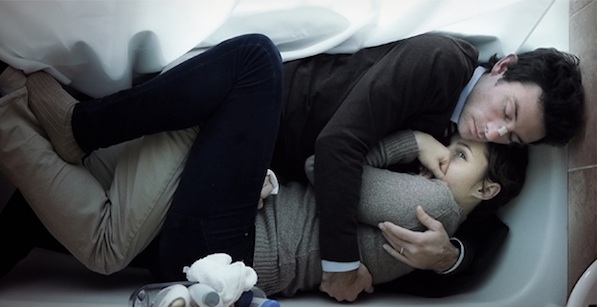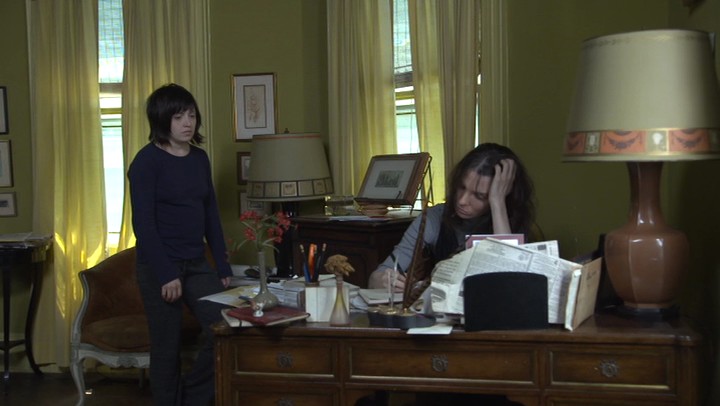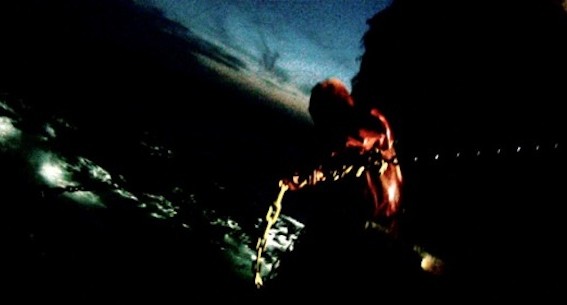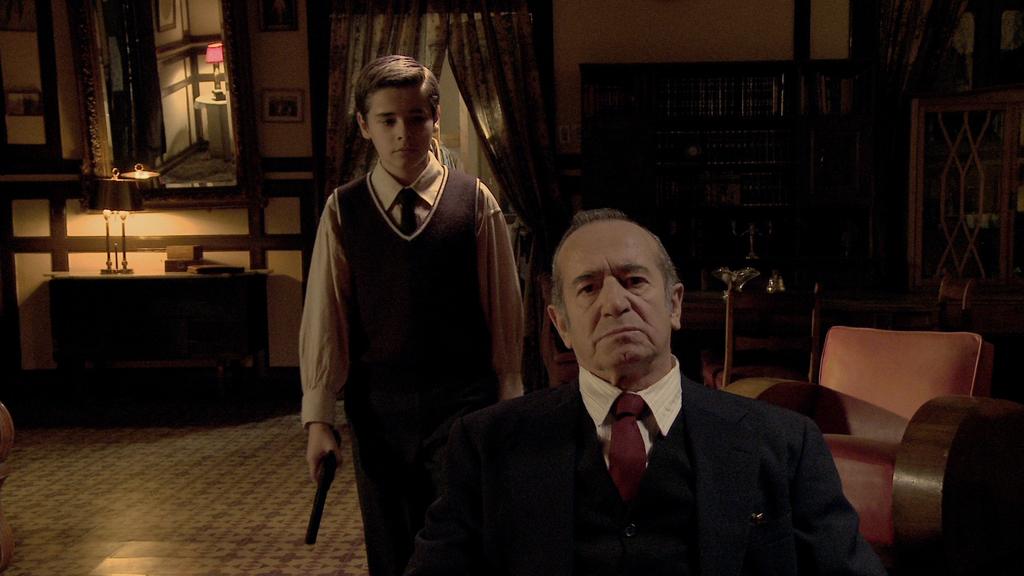To celebrate my favorite movies of 2013, I projected all of them on my wall just to see how they might speak to one other within the same space. I also invited Ip Man, the character played by Tony Leung Chiu Wai in Wong Kar-wai‘s The Grandmaster, to interact with this screen of favorite movies. Even though The Grandmaster didn’t make my top tier of this year’s films, it left me thinking about how its movement of bodies was a form of language, and how that physical language might provide a new way of speaking about films. When I think about my favorite movies of this year, I think about those that make me want to do more than just watch them. I am not just a pair of eyes escaping from reality through the screen. I am a body that is wholly engaged both with the screen and with the world beyond it, returning to it more whole than when I started.
When I look at these movies all playing on one screen, I start to see connections: patterns that reveal what I care about when I watch movies, and how I look at the world—and perhaps more importantly, the relationship between those two modes of looking.
The Unspeakable Act is about a teenager who carries a forbidden desire for her brother. The story sounds like cheap sensationalism, but instead we have one of the most intelligent teen films ever made, in which a young person’s emotional turbulence is treated with thoughtfulness and precision. In the documentary Stories We Tell, Sarah Polley explores her own family mystery of the true identity of her father. This film weaves a tapestry of voices with reenactments of an imagined past, personal history becomes a patchwork puzzle that we are constantly putting together through stories and images.
Another family story, Old Dog, tells a deceptively simple conflict: a Tibetan father and son fight over whether to sell their dog for easy money. But the images are densely coded with critical observations of the erosion of Tibetan society within a culture of crass commercialism. You can also find this multi-layered subtextual approach in my two other favorite Chinese productions. Drug War, in which a cops and robbers crime thriller on the surface, but the story stands in for multiple conflicts occurring in greater China, ruthless racing towards its own destruction. A Touch of Sin is a more overt picture of society gone haywire in a social environment of lies and injustice, but on another level, it’s also a dialogue between 21st-century China and its 3,000 year old cultural heritage, where zodiac animals and kung fu heroes take on a radical new meaning.
A different political dialogue takes place in The Butler, in which eighty years of African American history are lived through the humble career of a White House servant. Far from being a bland prestige picture, the film engages critically with issues of how history is told, who gets to tell it, and how the painful truths of one generation become the intolerable lies of another. American Hustle is far more enamored of the power of lies as a means of personal fulfillment for those who can’t settle for the empty mediocrity of mundane life. Indulging in the mythology of crooks and con artists, the film embraces flashiness but escapes cheapness; through brilliant dialogue, fearless acting and cinematic showmanship, it pushes its artifice to deliriously baroque levels of artistry.
The art of deception is also key to Viola, a shape-shifting romance among youths in Buenos Aires that moves confidently through different states of reality, dream and performance. Riffing off of Twelfth Night and other plays, it’s the most inspired take on Shakespeare in ages; instead of trying to transpose his plays to film, it taps into his playful spirit as a wellspring for inspiration. Another free literary adaptation is Alexander Sokurov’s Faust, which takes the famous Faust myth as a stage to embark on a pungent, multi-sensory journey into the guts of the human condition. You can practically smell the funk of flesh and dirt littering medieval Europe, a human infestation into which Faust heroically tries to bring reason, science and art—but grand ideas commingle with the corruption of flesh, and the film becomes an unholy union of body and mind. (Incidentally, I can’t help noting that this is the only European film in my top twenty, whereas there are two films from Latin America and five from Asia. The only other films in my top twenty that were filmed in Europe were both directed by Americans.)
There’s also an unholy commingling of elements in Leviathan, where high-tech HD cameras capture a grungy industrial fishing expedition in the high seas. The result is some of the most original images of the year images that contain a swirling host of associations, from Moby Dick to modern day ethnography.
The late master Raúl Ruiz also adopted HD for his last film, Night Across the Street, which floats in a dream space between childhood reverie and elegy at life’s twilight. The film is allusive, deeply personal testament to what matters at the end of life—the beautiful and the strange—in one last grand attempt to trace the mysteries of art and cinema. (For more, see my video essay previously produced on the film).
My favorite film of 2013, Upstream Color, embodies a good deal of mystery and exalts it more thrillingly than pretty much any film I’ve seen this year. Never mind the that this self-produced, self-distributed, truly independent feature was shot with a ridiculously small budget, attesting to the power of sheer inspiration and resourcefulness. The film boldly attacks narrative conventions and delivers images of terrifying beauty in startling new contexts, alienating us from the comfortable and familiar, challenging us to make new connections between what we see on screen and what we experience in the world. This is what the best films do.
Top 10 for 2013
1. Upstream Color
2. Night Across the Street
3. Drug War
4. Viola
5. Leviathan
6. Faust
7. The Butler
8. American Hustle
9. A Touch of Sin
10. Stories We Tell
Second 10: The Unspeakable Act, Old Dog, Like Someone in Love, Museum Hours, Before Midnight, These Birds Walk, Computer Chess, The Grandmaster, Twelve Years a Slave, Inside Llewyn Davis, An Oversimplification of Her Beauty.
Films to look forward to once they get distribution: The Strange Little Cat; I Have What? Chinese Peasants War: Rhetoric to Justice; Bad Hair; Sleepless Night; Stratum I and II; Die Welt; The Freeze/Satellite; Closed Curtain; The Priest’s Children; Battle of Tabatô.
Kevin B. Lee is a filmmaker, critic, video essayist, and founding editor of Keyframe. He tweets as @alsolikelife.
For the complete list of year-end lists on Keyframe, go to The Year in Film: 2013.
For the complete index of the films on these lists, go to 2013 Year in Review: Indexed.







